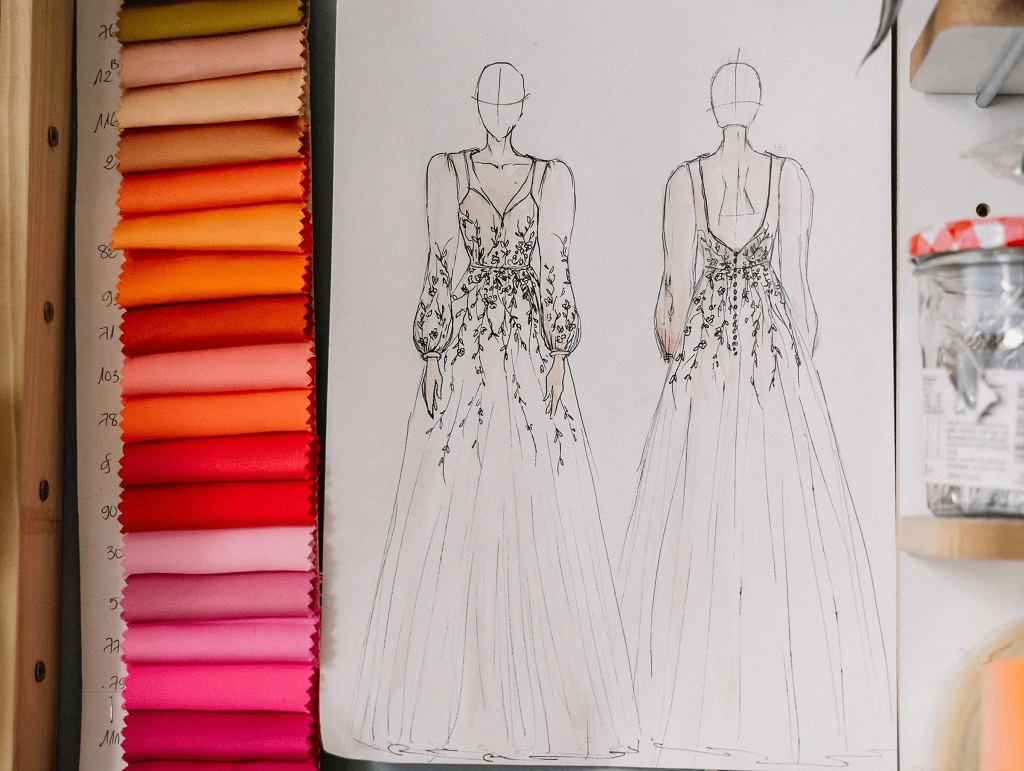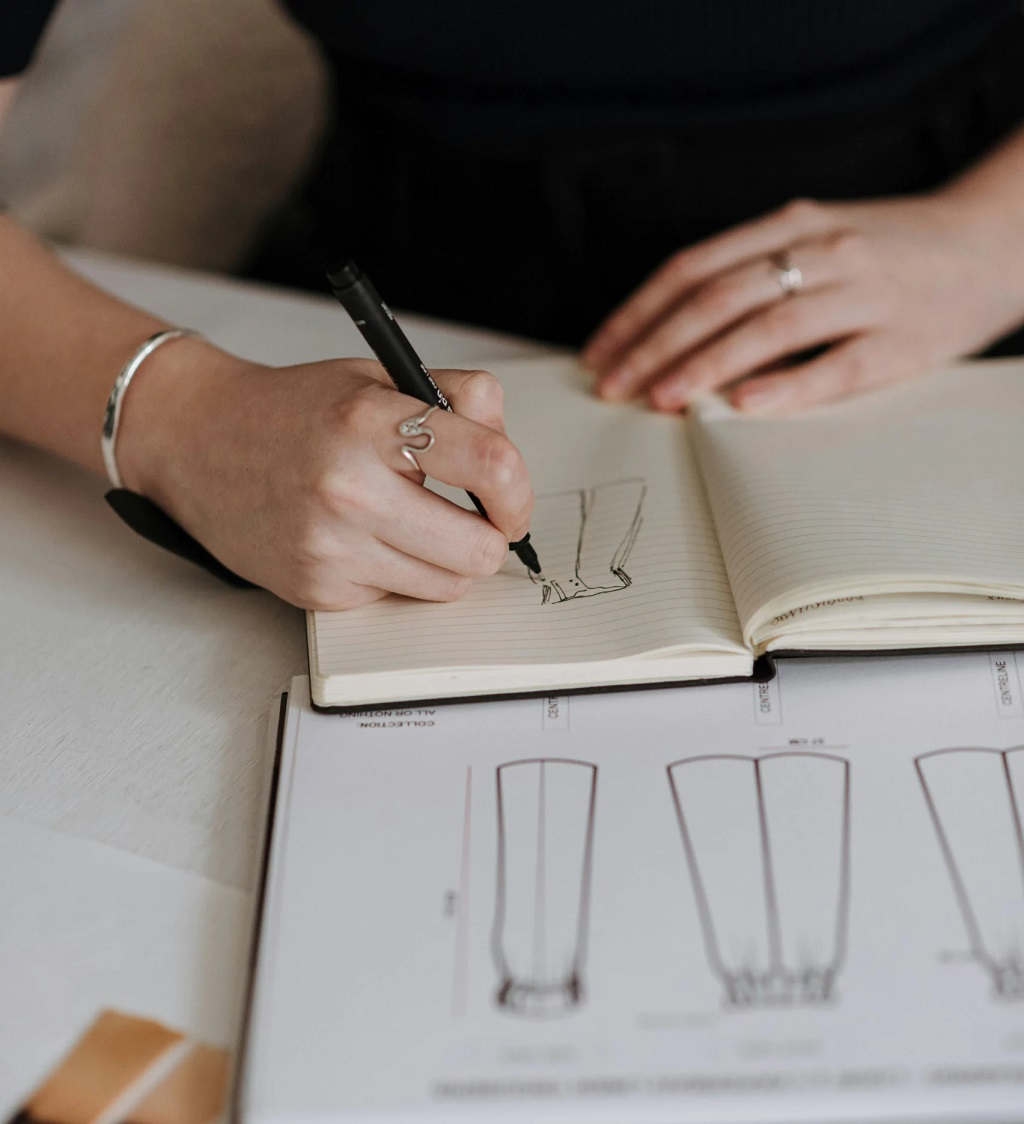Every artist, whether in the field of fashion or not, has their own style and preference when it comes to materials, medium, and sketching tools. The key is to use the variety that will best fit their purpose within your sketch as well as those that will help highlight the main elements you wish to focus on. These fashion elements could be shading, prints, patterns, colors, etc. Below are some of the most commonly used materials for fashion sketching.
Sketchbooks:
Could be a figure template sketchbook with a base drawing designed for men, women, or children sketches. Size A4 is typically used for more detailed sketches while the A5 size can be used for on-the-go sketches.
Pencils:
H, HB, 2B, and 4B are the best pencils for basic outline sketches, with some brands deemed superior.
Sharpeners & erasers:
A metal sharpener is recommended to keep pencils sharper rather than using a plastic sharpener. Full-sized erasers are better used for large sketches compared to the smaller erasers at the end of pencils.
Black pens:
Fine tipped pens are good for fine-tuning and adding details to sketches such as for creating prints and patterns.
Watercolors:
Watercolor pans tend to be easier to use than tubes as you don’t have to pause in between using colors to open a new tube of paint. This medium can be added to pencil and pen sketches to add color.
Markers:
Can be combined with pencils, pens, and graphite. Some feature special tips that provide different strokes and effects like a broad, fine, or brush tip.
Colored pencils:
A dry, easy-to-use medium that is relatively inexpensive. Not ideal for coloring larger surfaces quickly because of the smaller and more precise tip.
















Comments
No comments yet.
More Blog
All newsOn the Wings of Hermès is not your average brand activation. It’s a free, immersive theatrical experience in a waterfront hangar, showcasing the house’s commitment to craftsmanship; not through vitrines, curatorial texts, or product captions, but through live cinema, surreal storytelling, and a good dose of whimsy. It began at The Barker Hangar in Santa […]
“Future Fashion Concepts” equips the next generation of fashion designers and creatives with the knowledge and tools to lead responsible fashion. Under the guidance of Dean of Fashion Programs Mario Braghieri, IMM faculty member Annette Felder, and her sister and business partner Daniela Felder, Istituto Marangoni Miami’s Fashion Design students explored plant-based, next-gen textiles as […]
Elegant nails used to follow a strict, easy-to-follow code. They were short, square, and painted in colors found naturally in the human body—blush pink, sheer nude, OPI’s iconic Funny Bunny—mirroring the discreet style of European royalty. But in 2025, the definition of nail sophistication has expanded. Now, the length, shape, and color of a manicure […]